Metastatic Pheochromocytoma
A 35-year-old man with generalized weakness, ptosis, and difficulty swallowing.
A 35-year-old man without previous history of systemic illness presents to our clinic with generalized weakness, more prominent on the right side, ptosis, and difficulty swallowing for six months.
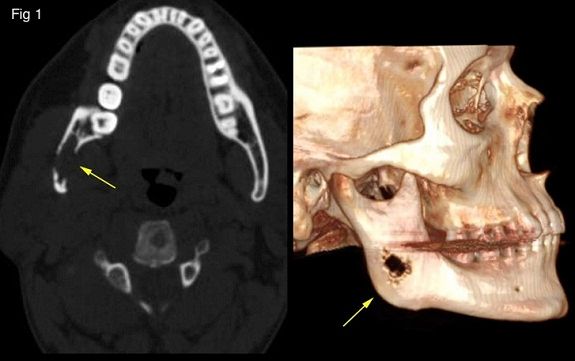
Figure 1: Axial CT image and 3D CT reconstruction show a lytic lesion at the right mandibular angle (yellow arrows).
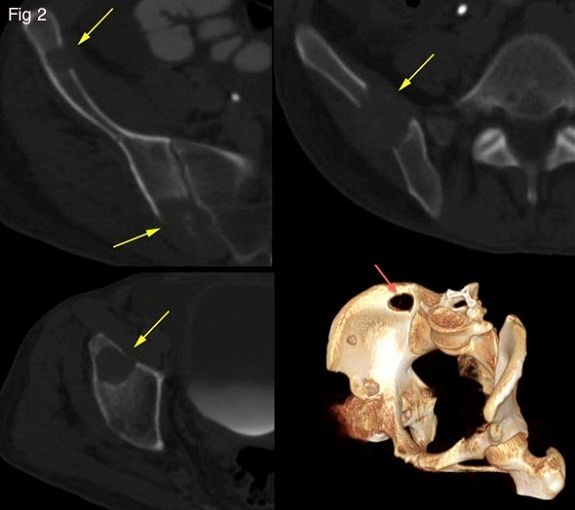
Figure 2: Axial CT images show multiple lytic lesions at the right iliac bone (yellow arrows). 3D CT reconstruction shows a large lytic lesion at the right iliac crest (red arrow).
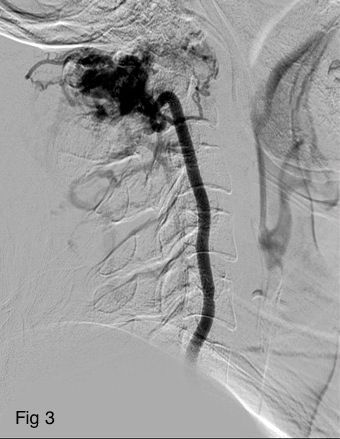
Figure 3: DSA shows a highly vascularized lesion at C1 vertebra.
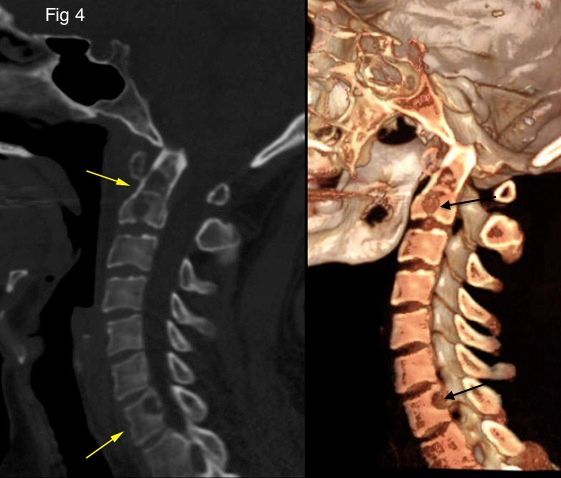
Figure 4: Sagittal CT image and 3D reconstruction shows lytic lesions at the right mandibular angle, odontoid process, and C4 vertebra (yellow and black arrows).
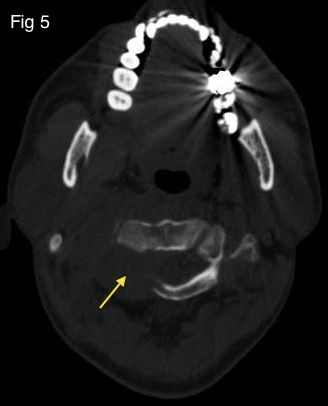
Figure 5: Axial CT image shows destruction of the C1 arch (yellow arrow).
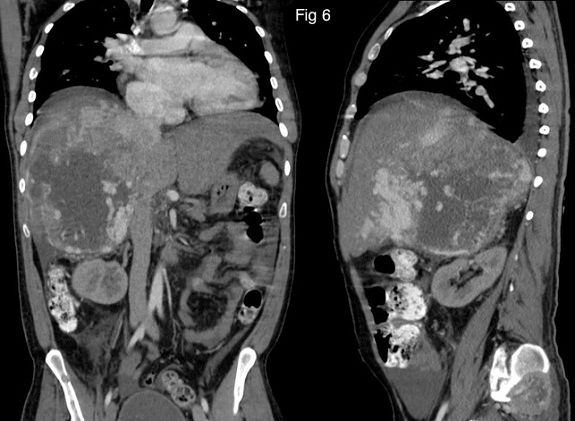
Figure 6: Coronal and sagittal CT images show an aggressive, necrotic, and vascularized lesion occupying the right hepatic lobe and hepatorenal fossa.
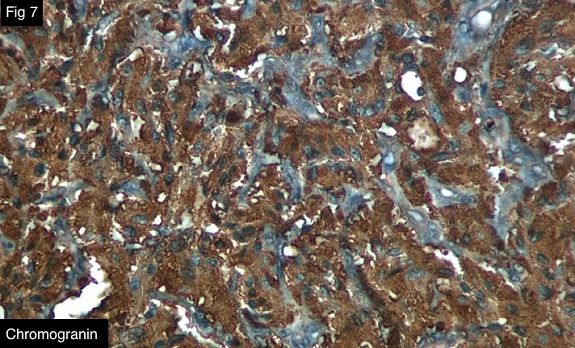
Figure 7: Histological tissue section shows positive staining for chromogranin.
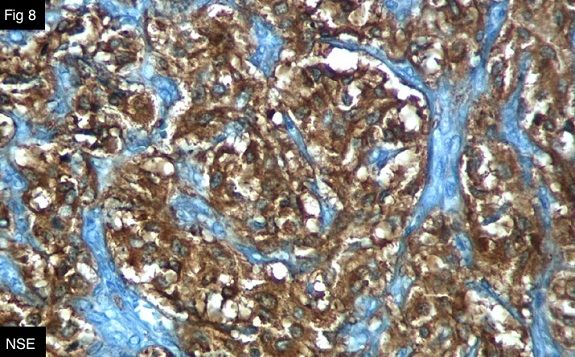
Figure 8: Histological tissue section shows positive staining for neuro-specific enolase (NSE).
Imaging studies disclosed multiple skeletal lytic lesions, a large hepatic lesion, and a highly vascularized cervical vertebral mass (Figures 1-6). Histological immunostaining for chromogranin and neurospecific enolase (NSE) was performed and were positive, thus confirming the diagnosis of metastatic pheochromocytoma (Figures 7 and 8).
Diagnosis: Pheochromocytoma with hepatic, mandibular, and vertebral metastasis
Diagnosis was also confirmed clinically with increased catecholamine levels as follows: urine total metanephrine (2,680 mcg/g creat; normal 94-445), urine normetanephrine (2,583 mcg/g creat; normal 67-390); plasma total metanephrine (1,559 pg/ml; normal < 205) and plasma normetanephrine (1,502 pg/ml; normal < 148).
Guido Santacana-Laffitte, MD, and Jomarie Cortés, MD, Department of Diagnostic Radiology, University of Puerto Rico School of Medicine
What New Research Reveals About Novice Use of AI-Guided Cardiac Ultrasound
April 4th 2025In a study recently presented at the American College of Cardiology (ACC) conference, researchers found that novice use of AI-guided cardiac ultrasound after an AI-enabled electrocardiogram increased the positive predictive value for reduced left ventricular ejection fraction (LVEF) or aortic valve stenosis by 33 percent.
The Reading Room Podcast: Current Perspectives on the Updated Appropriate Use Criteria for Brain PET
March 18th 2025In a new podcast, Satoshi Minoshima, M.D., Ph.D., and James Williams, Ph.D., share their insights on the recently updated appropriate use criteria for amyloid PET and tau PET in patients with mild cognitive impairment.
Study with CT Data Suggests Women with PE Have More Than Triple the One-Year Mortality Rate than Men
April 3rd 2025After a multivariable assessment including age and comorbidities, women with pulmonary embolism (PE) had a 48 percent higher risk of one-year mortality than men with PE, according to a new study involving over 33,000 patients.
GE HealthCare Debuts AI-Powered Cardiac CT Device at ACC Conference
April 1st 2025Featuring enhanced low-dose image quality with motion-free images, the Revolution Vibe CT system reportedly facilitates improved diagnostic clarity for patients with conditions ranging from in-stent restenosis to atrial fibrillation.